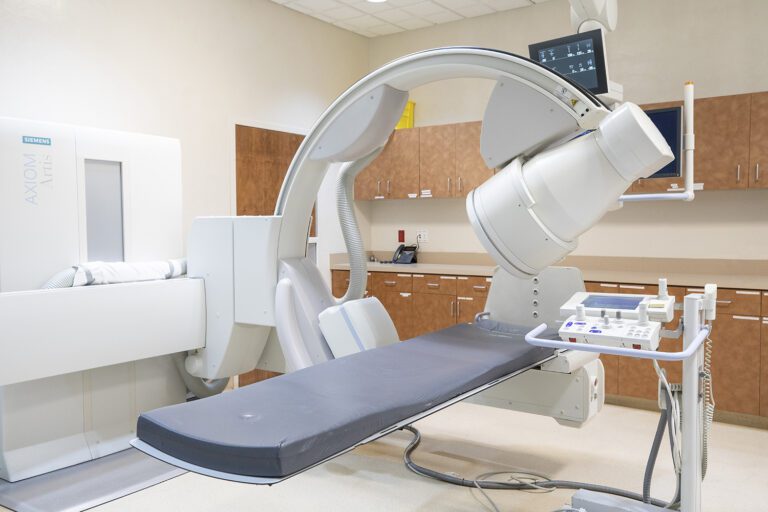You will be asked not to eat for 2 hours prior to the procedure; water and clear liquids are OK.
If you are taking prescribed anticoagulants (blood thinners) such as Coumadin or Plavix, you should ask your physician for instructions prior to the procedure. Patients should not take over-the-counter aspirin or aspirin-containing medications for at least 5 days prior to their procedure. Please consult with your doctor or healthcare provider before stopping ANY medications.
Please arrive for your procedure with a responsible adult who can drive you home.
After you arrive for your appointment, you will be escorted to a procedure room, where you will be asked to change into a patient gown. You will be positioned on an exam table, and fluoroscopy (“real-time” X-ray) will be used to determine the most appropriate needle entry site. The radiologist will clean the overlying skin, and a small amount of local anesthetic (lidocaine) will be injected with a small needle. You will feel a tiny pinch similar to a pinprick while the anesthetic is injected.
After the area becomes numb, the radiologist will insert a needle into the spinal canal while observing under fluoroscopy to ensure proper placement. After the needle has been properly positioned, a sample of your spinal fluid will be collected and sent to a lab for analysis, and the needle will be removed. A bandage will be placed over the insertion site, and you will be transported to the recovery area.
After being monitored for a short time, you will be released with discharge instructions. The entire procedure usually takes about 30-45 minutes.
For your safety and the protection of others, we do not allow anyone other than patients in our exam rooms.
Significant complications related to a lumbar puncture are very uncommon. The primary risks associated with this procedure include bleeding and infection.
The most common side effect after a lumbar puncture is a spinal headache, in which leakage of spinal fluid into the surrounding tissues produces a severe headache that typically worsens with standing. Spinal headaches usually resolve on their own, but an additional procedure called an epidural blood patch may be required to stop the leakage of spinal fluid and relieve the symptoms.
Most lumbar punctures are very well tolerated, with minimal discomfort afterwards that is usually easily controlled with non-prescription pain medication. You may apply ice to the needle insertion site to reduce swelling if necessary. Symptoms usually disappear within 48 hours; contact your physician or healthcare provider if they persist for more than two days.
Your doctor or healthcare provider will receive separate reports from the radiologist and the laboratory where the fluid sample was sent for analysis. After receiving these reports, your doctor or healthcare provider will be able to discuss the results with you.
Reports are also available on the Patient Portal


